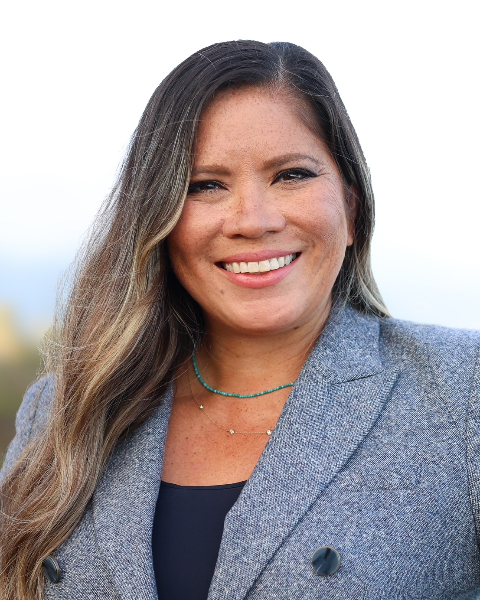PQA 09 - PQA 09 Hematologic Malignancies and Digital Health Innovations Poster Q&A
3396 - Enhancing Charge Capture Accuracy in Radiation Oncology: A Comprehensive Software Analysis
Tuesday, October 1, 2024
4:00 PM - 5:00 PM ET
Location: Hall C
Screen: 18

Christel Smith, PhD
Fuse Oncology, Inc.
Boone, NC
Presenter(s)
M. Terry1, J. J. Land2, C. Smith1, B. J. Sintay3, and D. B. Wiant4; 1Fuse Oncology, Greensboro, NC, 2CARTI, Little Rock, AZ, 3Cone Health, Greensboro, NC, 4Cone Health Cancer Center, Greensboro, NC
Purpose/Objective(s): Recent incidents have highlighted the vulnerability of hospital systems to federal paybacks or revenue losses stemming from billing inaccuracies. In radiation oncology (RO) this problem may be exacerbated by complex workflows spanning both electronic health record systems (EHR) and oncology information systems (OIS) and a lack of standardization in clinical workflows. Ensuring accurate documentation and correct charge capture is essential for mitigating billing errors. Getting the workflows correct on the front end saves time and cost, which is critically important for RO reimbursement. Materials/
Methods: We conducted a retrospective analysis of clinics that utilized a new commercial software that audits daily patient visits by extracting relevant data from both the OIS and the hospitals EHR. This software utilizes a curated rule set engine to predict charges, which are then compared to actual charges captured in the OIS to identify any inconsistencies. In addition to the software system, coding subject matter experts worked alongside the clinicians to standardize processes and implement coding best practices. This allowed the clinics to implement standardized workflows that could be represented with workflow rules and to automatically track adherence to these workflows. The evaluation was performed across seven departments from October to December 2023, aiming to understand the utility of rules-based standardization integrated into a system to automate charge capture review.
Results: The study encompassed an evaluation of 65,633 billable events, amounting to $108,685,229 in exportable charges, across seven departments. Analysis revealed that 10.9% of these events exhibited charge capture errors, while activity standardization stood at 83%. Notably, over the three-month observation period, there was a notable increase of 3.6% in activity standardization, concomitant with a decline of 1.4% in the charge capture error rate. In a traditional manual audit of workflow consistency, the end user would have to review every individual charge. If we consider a single clinic from this study, this would be 2,269 charges (99 charges per day) in the first month. With the use of the software system, 81% of charges coming through the system were found to follow the workflow rules (Activity Standardization) and now the end user only needed to manually review 428 charges (19 charges per day). Four months later, workflow improvements and staff education resulted in 93.4% Activity Standardization resulting in the end user only manually reviewing 116 charges out of the total 1465 (6 charges per day).
Conclusion: These findings may imply that automated daily charge capture review together and workflow standardization, augmented by software tools and expert consulting holds promise for improving both billing accuracy and efficiency.
Purpose/Objective(s): Recent incidents have highlighted the vulnerability of hospital systems to federal paybacks or revenue losses stemming from billing inaccuracies. In radiation oncology (RO) this problem may be exacerbated by complex workflows spanning both electronic health record systems (EHR) and oncology information systems (OIS) and a lack of standardization in clinical workflows. Ensuring accurate documentation and correct charge capture is essential for mitigating billing errors. Getting the workflows correct on the front end saves time and cost, which is critically important for RO reimbursement. Materials/
Methods: We conducted a retrospective analysis of clinics that utilized a new commercial software that audits daily patient visits by extracting relevant data from both the OIS and the hospitals EHR. This software utilizes a curated rule set engine to predict charges, which are then compared to actual charges captured in the OIS to identify any inconsistencies. In addition to the software system, coding subject matter experts worked alongside the clinicians to standardize processes and implement coding best practices. This allowed the clinics to implement standardized workflows that could be represented with workflow rules and to automatically track adherence to these workflows. The evaluation was performed across seven departments from October to December 2023, aiming to understand the utility of rules-based standardization integrated into a system to automate charge capture review.
Results: The study encompassed an evaluation of 65,633 billable events, amounting to $108,685,229 in exportable charges, across seven departments. Analysis revealed that 10.9% of these events exhibited charge capture errors, while activity standardization stood at 83%. Notably, over the three-month observation period, there was a notable increase of 3.6% in activity standardization, concomitant with a decline of 1.4% in the charge capture error rate. In a traditional manual audit of workflow consistency, the end user would have to review every individual charge. If we consider a single clinic from this study, this would be 2,269 charges (99 charges per day) in the first month. With the use of the software system, 81% of charges coming through the system were found to follow the workflow rules (Activity Standardization) and now the end user only needed to manually review 428 charges (19 charges per day). Four months later, workflow improvements and staff education resulted in 93.4% Activity Standardization resulting in the end user only manually reviewing 116 charges out of the total 1465 (6 charges per day).
Conclusion: These findings may imply that automated daily charge capture review together and workflow standardization, augmented by software tools and expert consulting holds promise for improving both billing accuracy and efficiency.
